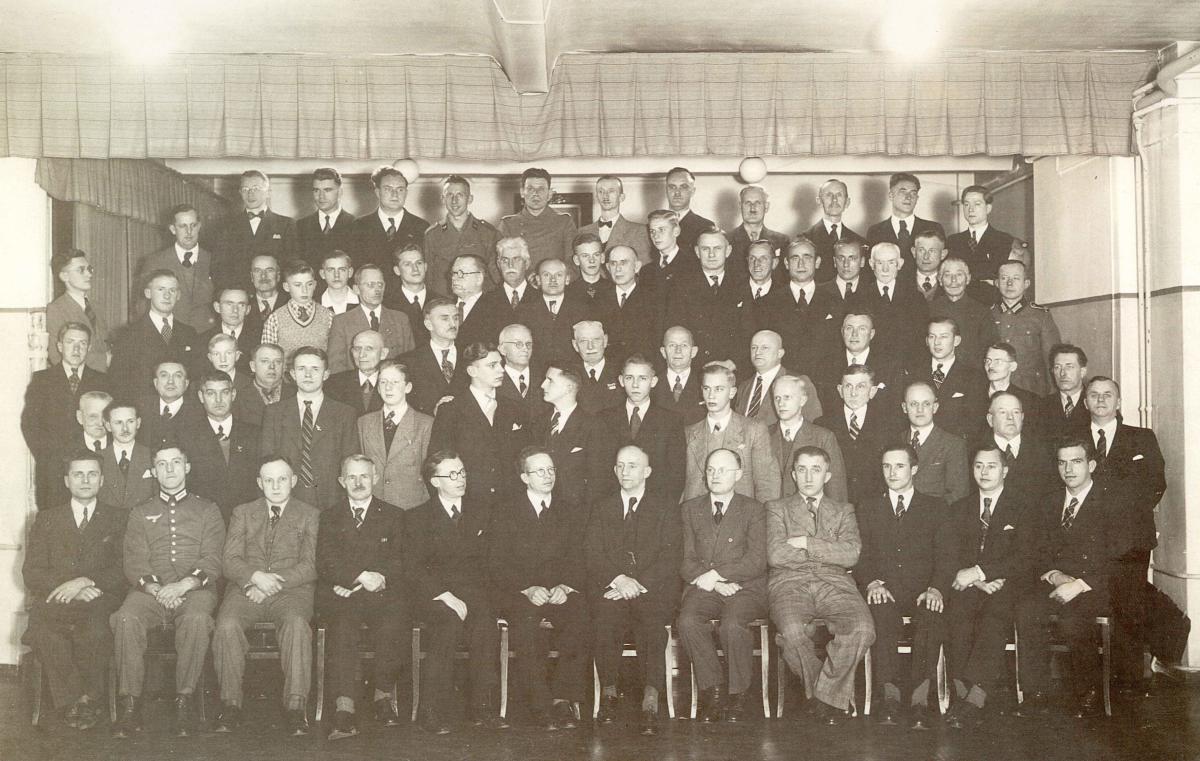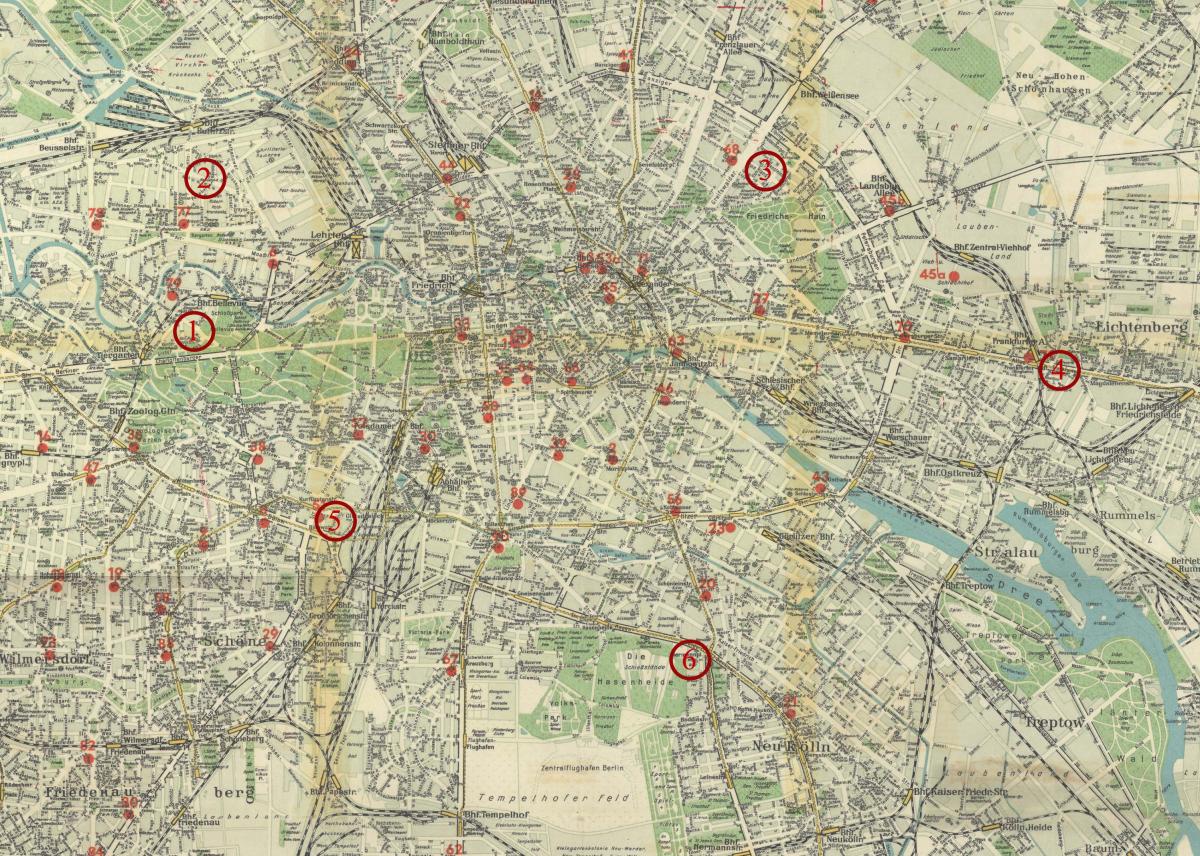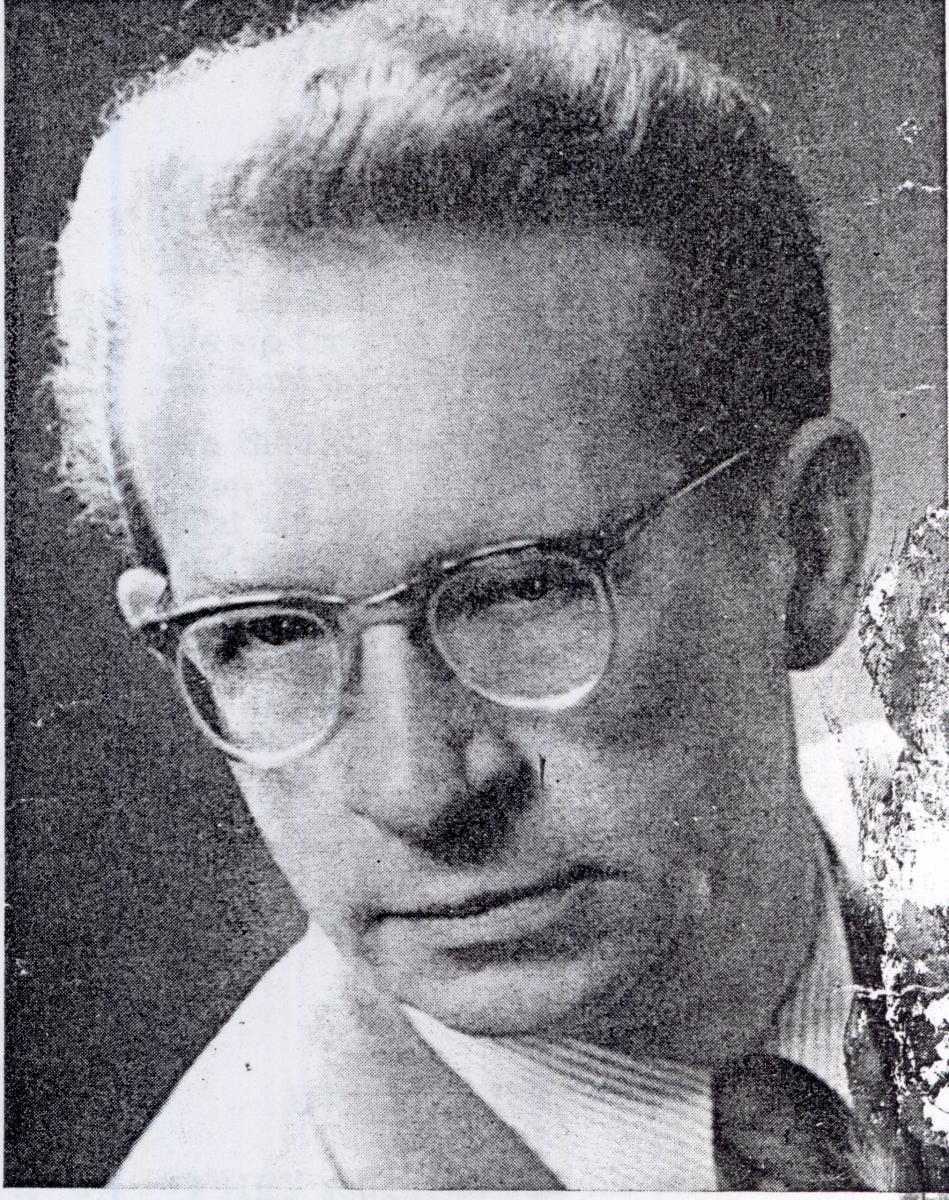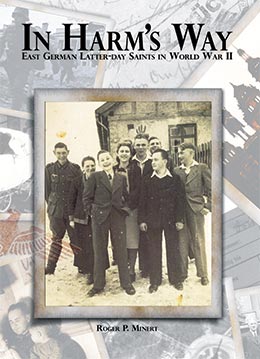Berlin District, East German Mission
Roger P. Minert, In Harm’s Way: East German Latter-day Saints in World War II (Provo, UT: Religious Studies Center, Brigham Young University, 2009), 39-42.
The capital of Hitler’s Germany was a metropolis of 4,321,000 people in 1939.[1] Indeed, Berlin was home to more members of the LDS Church than any other city in the Reich. There were six branches in the city, and four more outside of town completed the Berlin District of the East German Mission.
In the heart of the historic province of Brandenburg, the Berlin District stretched north to the border of Mecklenburg, northeast to Pomerania, southwest to Potsdam, and due west to Rathenow. From the center of the district, it took about ninety minutes to reach Eberswalde and Rathenow by train. There was also a group of Saints meeting in Leest, just six miles west of Potsdam.
| Berlin District[2] | 1939 | 1940 | 1941 | 1942 |
| Elders | 73 | 75 | ||
| Priests | 30 | 31 | ||
| Teachers | 38 | 41 | ||
| Deacons | 61 | 56 | ||
| Other Adult Males | 193 | 192 | ||
| Adult Females | 776 | 775 | ||
| Male Children | 62 | 62 | ||
| Female Children | 36 | 42 | ||
| Total | 1269 | 1274 | 1186 | 1291 |
The 1,270 members in the district constituted 17 percent of the entire mission population. Just prior to World War II, Richard Ranglack of the Berlin Moabit Branch was serving as district president. When he was called as first counselor to mission supervisor Herbert Klopfer after the evacuation of the American missionaries, he was replaced by Friedrich (Fritz) Fischer of the Berlin Center Branch.[3] “My father was very busy as the district president and had lots of Church work to do. . . . He traveled all over the mission on the train. The Church paid his tickets,” recalled his son Helmut.[4]
Fritz Fischer was a remarkable missionary. In 1918, he had become acquainted with The Church of Jesus Christ of Latter-day Saints while living in Berlin. He took the message of the restored gospel back to his home town of Selbongen, East Prussia, where he was instrumental in bringing dozens of relatives and friends into the Church and establishing a new branch there.[5]
A district conference was held in Berlin every spring and fall through the end of 1944, according to Richard Ranglack.[6] Several members recall attending district conferences in the Lehrervereinshalle (teachers’ union hall) in downtown Berlin.[7] From mission notes it is clear that all Church programs were being carried out in the district, including genealogical research and recreation activities.
 The Berlin District included ten units of the Church in and around the capital city.
The Berlin District included ten units of the Church in and around the capital city.
As is told in the individual histories of the branches in the Berlin District, several meeting rooms were destroyed by 1945, and branch leaders were compelled to seek out new and temporary meeting places. Most of the unmarried men and young fathers in the district were drafted into the military, and many of the sisters left the city with their children to find less dangerous places to live. Entire LDS families moved away after losing their homes or when offices and factories were moved to rural locations and required their employees to move with them.
 A district priesthood meeting held in 1941 in the Berlin Center Branch rooms in the Hufelandstrasse
A district priesthood meeting held in 1941 in the Berlin Center Branch rooms in the Hufelandstrasse
The Air War over Berlin, 1939–1945
| Air-raid warnings | 389 |
| Air raids | approx. 300 |
| Residential units destroyed | 36% |
| Total structures destroyed | 21% (West Berlin), 15% (East Berlin) |
| Rubble from destroyed structures | Estimated 98 million cubic yards (75 million cubic meters) |
| Public air-raid shelter space available | approx. 25%[8] |
| “Battle of Berlin” (from the air) lasted from 21 November 1944 to 25 March 1945 (British Royal Air Force and American Army Air Corps) | 33 air raids 9,100 airplanes in action 500 airplanes shot down 4,000 civilian deaths 340,000 homes destroyed 400,000 people homeless |
| Civilians killed 1939–1945 | 52,000 |
| Civilians killed spring 1945 | Estimated 100,000 |
| German soldiers killed spring 1945 | Estimated 50,000–75,000 |
| Russian soldiers killed spring 1945 | Estimated 100,000 |
| Women raped spring 1945 | 20,000 to 100,000 |
| (Sources: Ryan, The Last Battle, and Escher, “Berlin am Ende des Luftkrieges”) |
By 1944, Berlin was under constant attack from the air—by the British at night and the Americans by day. By the time the city was conquered in May 1945, approximately 150,000 Berlin civilians had lost their lives, and more than one million more had left the city.[9] At least one-half of the members of the LDS branches in Berlin were still there to witness the hopeless battle fought by the harried German defenders against the invading Red Army. When the dust settled, more than one-third of the dwellings of Berlin were no longer inhabitable.[10]
 The East German Mission office and five branches of the Church were located in Berlin in 1939: 1 = mission office; 2 = Moabit Branch; 3 = Center Branch; 4 = East Branch; 5 = Neukölln Branch; 6 = Schöneberg Branch.
The East German Mission office and five branches of the Church were located in Berlin in 1939: 1 = mission office; 2 = Moabit Branch; 3 = Center Branch; 4 = East Branch; 5 = Neukölln Branch; 6 = Schöneberg Branch.
The battle for Berlin ended at the Zoo Flak Towers (Schöneberg Branch territory), while the formal surrender of Berlin took place in an apartment in Karlshorst (Neukölln Branch territory), where field marshal Wilhelm Keitel signed for the German Army High Command.
Despite the sufferings and destruction of the war, all six LDS branches in the city were alive and remained functioning at the end of the war. The four branches outside of the city were substantially weakened but were all holding meetings again by the end of the summer of 1945.
 Fritz Fischer was the president of the Berlin District throughout World War II. (Instructor)
Fritz Fischer was the president of the Berlin District throughout World War II. (Instructor)
Notes
[1] Cornelius Ryan, Last Battle: The Classic History of the Battle of Berlin (New York: Simon & Schuster, 1994), 26.
[2] Presiding Bishopric, “Financial, Statistical, and Historical Reports of Wards, Stakes, and Missions, 1884–1955,” CR 4 12, 257.
[3] Fritz Fischer was known as Käsefischer (the Fischer who deals in cheese), while a man named Karl Fischer in the Berlin East Branch was known as Mistfischer (the Fischer who deals in manure). Both terms were used affectionately among the members.
[4] Helmut Fischer, interviewed by the author in German, Leipzig, Germany, June 2, 2007. German summarized into English by the author.
[5] Karl A. Keller, “Enthusiasm Is His Motto,” Instructor, April 1956, 100–101. See also the chapter on the Selbongen Branch in this history.
[6] Richard Ranglack, autobiography (unpublished). Private collection.
[7] Horst Schwermer, interviewed by the author, Salt Lake City, December 8, 2006.
[8] At 300% to 400% capacity.
[9] Ryan, 520.
[10] Felix Escher, Luftbildplan Berlin 1945, 6–7.
